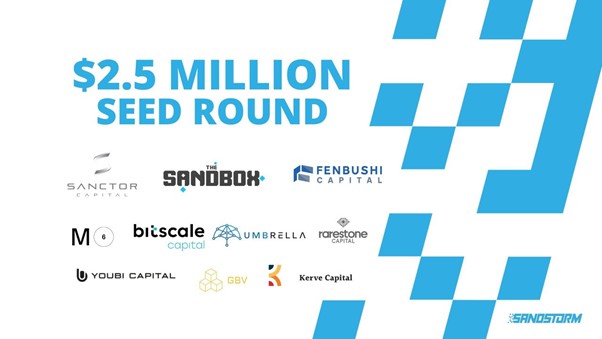The number of brands seeking to gain a foothold in the metaverse has risen exponentially in recent months, with the likes of Nike and Disney conducting a recruitment drive to employ metaverse specialists. According to JPMorgan, annual metaverse revenue opportunities through social commerce, live events and advertising could soon surpass $1 trillion.
SandStorm, the world’s largest weekly metaverse event, is determined to capitalize on this trend by paving the way for brands to establish a presence in virtual reality. The project has unveiled a new multi-chain platform to connect established and emerging brands with the top builders in the metaverse.
Here Come the Brands
Having recently closed a $2.5m seed round, SandStorm will debut the beta version of its live platform and NFT marketplace at next week’s South by Southwest (SXSW) festival in Austin, Texas.
Built on the Polygon and Ethereum blockchains, the platform enables brands that have yet to make their presence felt in the metaverse search through a directory containing hundreds of verified Web3 builders. SandStorm will also provide white-glove service to bring brands into the metaverse and build experiences for them within popular open-world environments such as The Sandbox.
“As a growing number of brands are entering the metaverse through The Sandbox, we’re seeing an increased need for a platform to connect them to Builders, Agencies, Architects, Designers, Community Managers and thousands of providers in this open ecosystem,” says the game’s co-founder and COO Sebastian Borget, who invested in SandStorm’s recent seed round alongside a swathe of VC funds.
“SandStorm offers a decentralised solution for matching these needs and providing visibility to projects through meet-ups and social events in the metaverse.”
Although several brands have already planted a flag in the metaverse, many remain daunted by the steep learning curve that awaits them. SandStorm intends to help such companies overcome their reservations by bridging the education gap and exploring revenue-raising opportunities via NFTs and virtual experiences.
The Sandbox has been one of the runaway success stories in the burgeoning metaverse space. Primary sales of virtual land parcels in the game generated $12 million in Q4 of 2021 while secondary sales volume grew 1,685% compared to the previous quarter. Several major brands have already purchased land in The Sandbox, including luxury fashion house Gucci which is developing what it calls an interactive fashion experience “inspired by childhood memories of the search for beauty.”
Reflecting on SandStorm’s vast creators’ community, CEO Steve McGarry said, “We’ve seen metaverse builders mint everything from skyscrapers and avatars to custom headphones on the platform already. We’re hyper focused on the one-of-one NFTs that take creators weeks to construct. We’re not interested in the 1,000+ collections.”
Metaverse Marketing
The arrival of SandStorm’s platform comes at a time when consumer brands are reinventing marketing in the metaverse. Decentraland, a rival of The Sandbox, is currently gearing up to host a virtual fashion week featuring designers such as Dolce & Gabbana, Tommy Hilfiger, Dundas and Etro. McDonald’s, meanwhile, has filed no fewer than 10 trademark applications including one for a virtual restaurant that delivers to customers’ homes.
According to McGarry, SandStorm already reaches over 3 million users each month and has attracted 50 brands and over 500 builders ahead of launch. The latter have been onboarding since the platform’s Builders Program launched last October.
Brands can leverage the metaverse in numerous ways, such as by releasing limited-edition digital collectibles, advertising on billboards seen by gamers, and hosting virtual experiences and rewards programs. Many commentators believe that brands who ignore the metaverse risk being left behind, invoking the cautionary tale of Blockbuster Video – a company that once turned down the chance to buy Netflix for $50 million.
Credit: Source link












































































































































